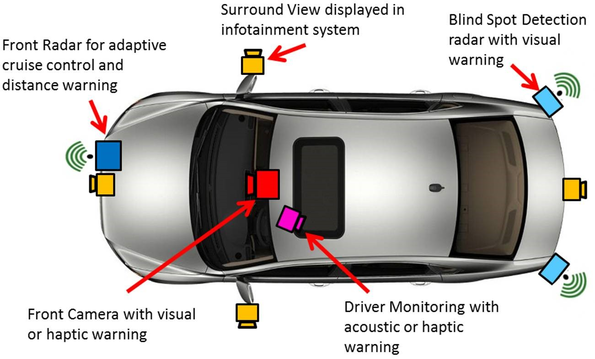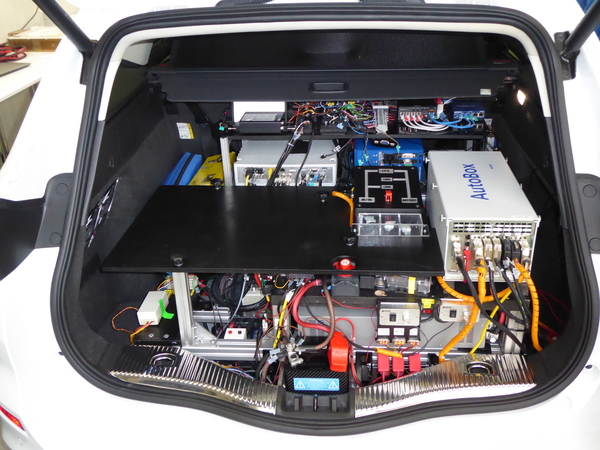Automotive Communication Systems
Current communication systems inside vehicle demand highly increased data rates to improve the performance of several applications including driver assistance, safety and comfort. In the context of automated driving functions, the redundant communication system must have a high data rate in order to be able to transport enough information from the vehicle sensors (see Fig. 1) to the evaluation and decision units even if the system malfunctions. In addition, the system must be able to constantly monitor its current "health status" and report any deterioration in an appropriate time before such malfunctions occur.
The increasing total number of sensors as well as the data-intensive applications demand a novel use of the wired-bus system inside vehicles. Several approaches have been developed by means of LIN, CAN, FlexRay, MOST, LVDS and Automotive-Ethernet technologies to support the massive connection of sensors with the increase of available bandwidth. LIN, CAN and FlexRay support communication with limited data-rate. On the other hand, MOST and LVDS and Automotive Ethernet based solutions implement higher data-rate systems deploying additional infrastructure with increased costs. Current research addresses the implementation of a new bus system to interconnect nodes habilitating a bridge between the already installed CAN and FlexRay, and simultaneously to allow for high data rate transmissions with reduced costs.


The aim of the research project in the context of automated driving is to investigate whether OFDM technology can fulfill the requirements for data transmission. Technical, economic, safety, as well as environmental requirements should be taken into account. In this field, several research directions are conducted:
- The implementation and simulation of transceivers to communicate nodes by means of cognitive technologies (SDR).
- The design and simulation of analog front ends.
- The channel modeling and the measurement of main channel parameters.
- The use of FBMC waveform in comparison to OFDM.
- The arbitration mechanisms to implement channel access procedures.
- The synchronization techniques for point to point and multipoint connection.
Goals of the project are the following:
- Creation of a universal, robust, and reliable communication system for the new requirement.
- Investigation of a new form of wired data transmission based on OFDM technology suitable for use in the vehicle based on efficiency, optimization potential, economy, availability of technology, and ecosystem.
- System standardization with positive project results.
